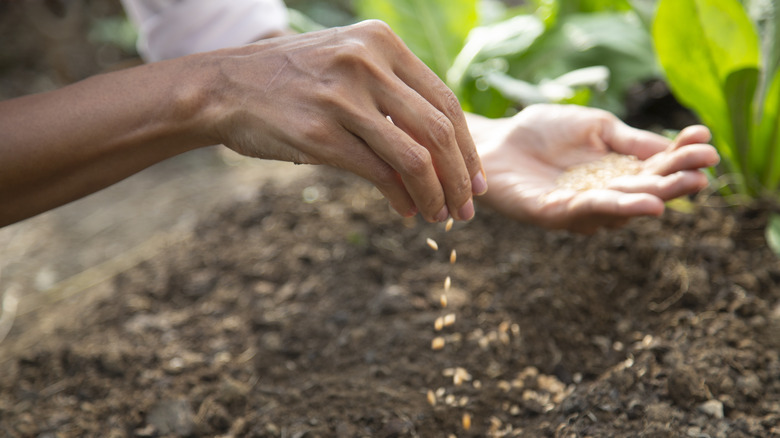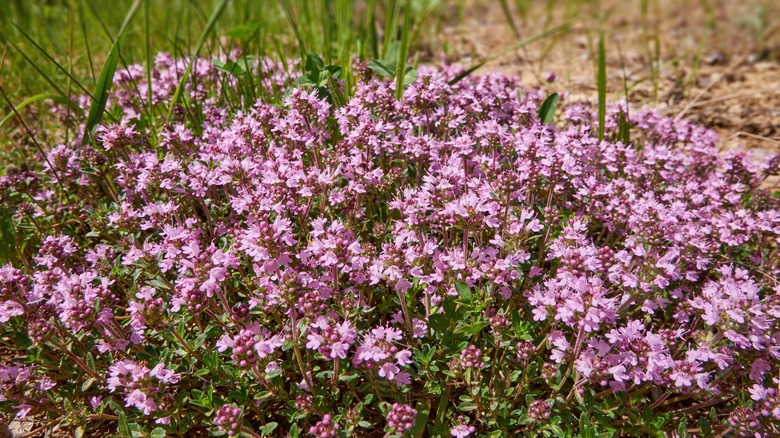Prevent Weeds From Taking Over By Planting This Fragrant Ground Cover
We may receive a commission on purchases made from links.
Ground covers look gorgeous and help keep weeds out. Creeping thyme (Thymus serpyllum) is a great ground cover choice for weed suppression in an ornamental garden or turf alternative. This perennial is also ideal for planting between pavers. It is a low-growing ground cover that has a thick, dense mat that chokes out any weeds that might try to grow. Creeping thyme has beautiful purple flowers that bloom in the late spring to early summer. These blooms have a very pleasant scent that attracts butterflies and other pollinators.
A close cousin of the edible thyme herb, there are various creeping thyme varieties, including white, wooly, and red creeping thyme. These plants spread about 12 inches apart, so they need some space to grow. Creeping thyme can tolerate most soil conditions and climates. This hardy perennial is pretty low-maintenance. Besides being drought-resistant, creeping thyme is resistant to diseases and pests. It only needs light pruning to manage overgrowth.
How to plant creeping thyme
Creeping thyme grows best in an area with full sun. These plants should get at least six hours of sunlight a day. Creeping thyme can be grown in hardiness zones four to nine. You can look up your zone on the USDA website. You should plant this ground cover in the spring after the threat of frost has passed. Avoid planting during the summer when it's too hot. This makes it hard for the ground cover to become established. You can directly sow the seeds into the ground or use potted nursery starts.
If you are growing multiple creeping thyme plants, make sure you space them 8 to 12 inches apart to accommodate spreading. Creeping thyme can be planted in most soils — even those that lack nutrients. However, avoid planting creeping thyme in wet clay. For best results, plant this ground cover in well-draining soil that has a neutral to slightly alkaline pH of about 6.5 to 7.5. You can buy a soil pH tester on Amazon for $10 to figure out the pH of your soil.
Creeping thyme care tips
Make sure you avoid overwatering your creeping thyme plant, as this can lead to root rot. Until the plant is well established, allow the soil to stay moist. After that, reduce watering. During hot weather, water every 10 days or so. Allow the soil to dry out between waterings. Creeping thyme grows well in most soils, so it doesn't require fertilizer. However, if it is grown in particularly poor soil, a balanced fertilizer can help ensure that it gets nutrients.
Creeping thyme can become woody if not pruned. You should regularly prune creeping thyme to keep it looking great and manage its spread. However, try not to prune this ground cover for the first year. To rejuvenate new growth, creeping thyme should be cut back in the spring. Remove any woody stems from the base of the plant. Then, you'll want to prune again at the end of the summer, right after the flowers die off.


